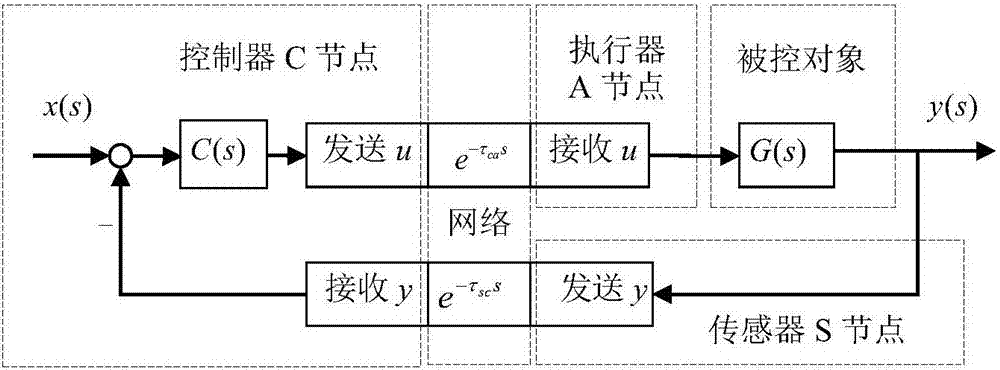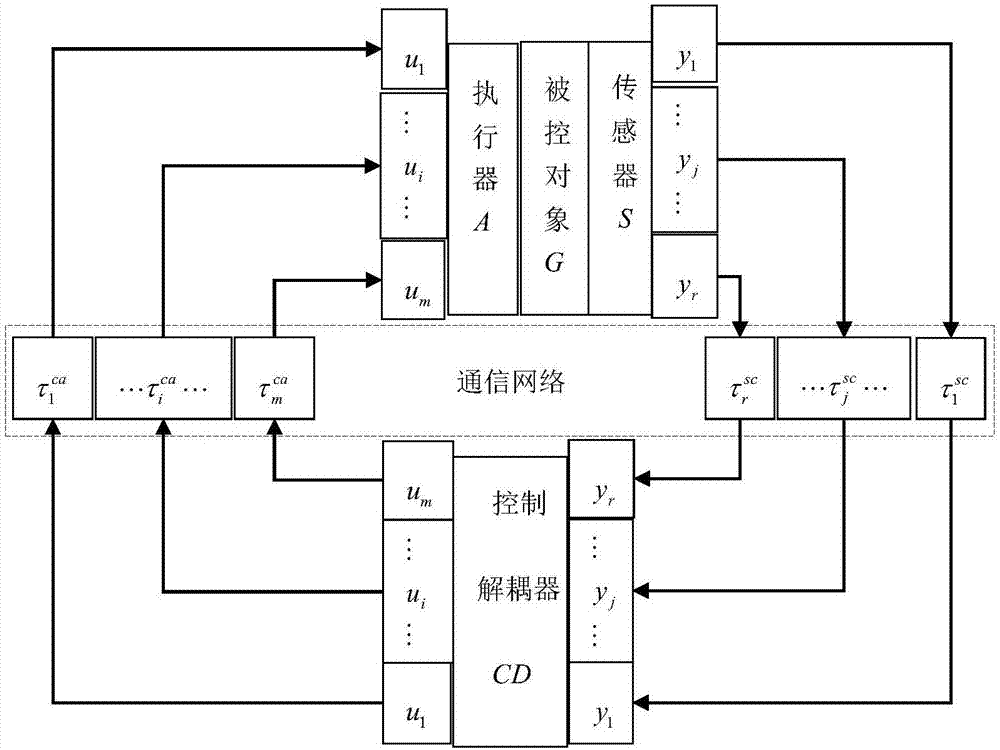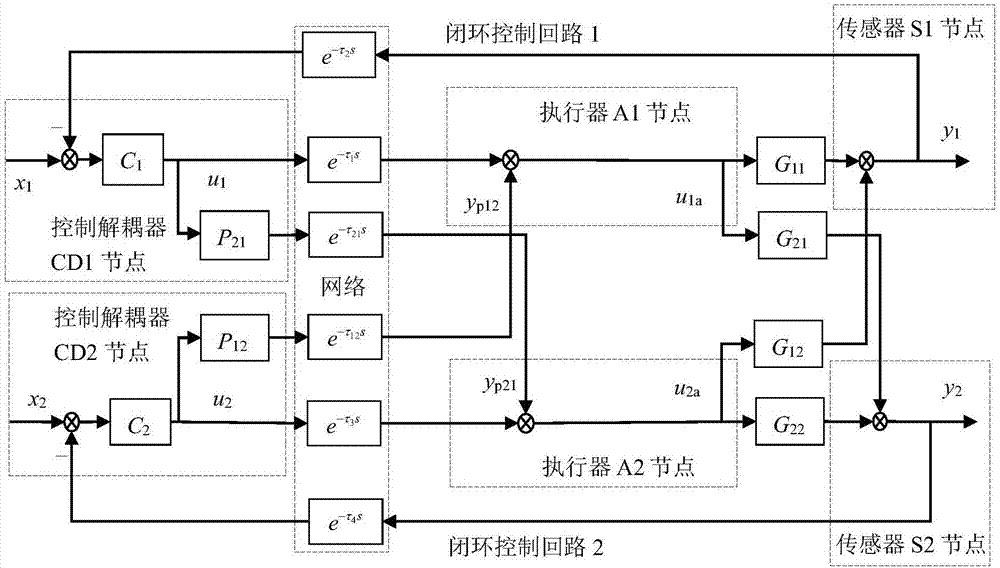Two-degrees-of-freedom IMC method for two-input and two-output NDCS network delay
A technology of network delay and TITO-NDCS, applied in the field of multi-input multi-output network decoupling control system, can solve the problems of complex influence, many uncertain factors, complex internal structure, etc., so as to reduce the influence and improve the quality of dynamic performance Effect
- Summary
- Abstract
- Description
- Claims
- Application Information
AI Technical Summary
Problems solved by technology
Method used
Image
Examples
Embodiment Construction
[0147] The following will refer to the attached Figure 5 Exemplary embodiments of the present invention will be described in detail to make the above-mentioned features and advantages of the present invention clearer to those skilled in the art.
[0148] The specific implementation steps are as follows:
[0149] For closed loop control loop 1:
[0150] Step 1: The sensor S1 node works in the time-driven mode, and the triggered signal is period h 1 After the sampling signal of the controlled object G 11 (s) output signal y 11 (s) and the controlled object cross-channel transfer function G 12 (s) output signal y 12 (s), and the output signal y of the A1 node of the actuator 11mb (s) Sampling and calculating the system output signal y of the closed-loop control loop 1 1 (s) and the feedback signal y 1b (s), and y 1 (s)=y 11 (s)+y 12 (s) and y 1b (s)=y 1 (s)-y 11mb (s);
[0151] Step 2: The sensor S1 node will feed back the signal y 1b (s), through the feedback ne...
PUM
 Login to View More
Login to View More Abstract
Description
Claims
Application Information
 Login to View More
Login to View More - R&D
- Intellectual Property
- Life Sciences
- Materials
- Tech Scout
- Unparalleled Data Quality
- Higher Quality Content
- 60% Fewer Hallucinations
Browse by: Latest US Patents, China's latest patents, Technical Efficacy Thesaurus, Application Domain, Technology Topic, Popular Technical Reports.
© 2025 PatSnap. All rights reserved.Legal|Privacy policy|Modern Slavery Act Transparency Statement|Sitemap|About US| Contact US: help@patsnap.com



